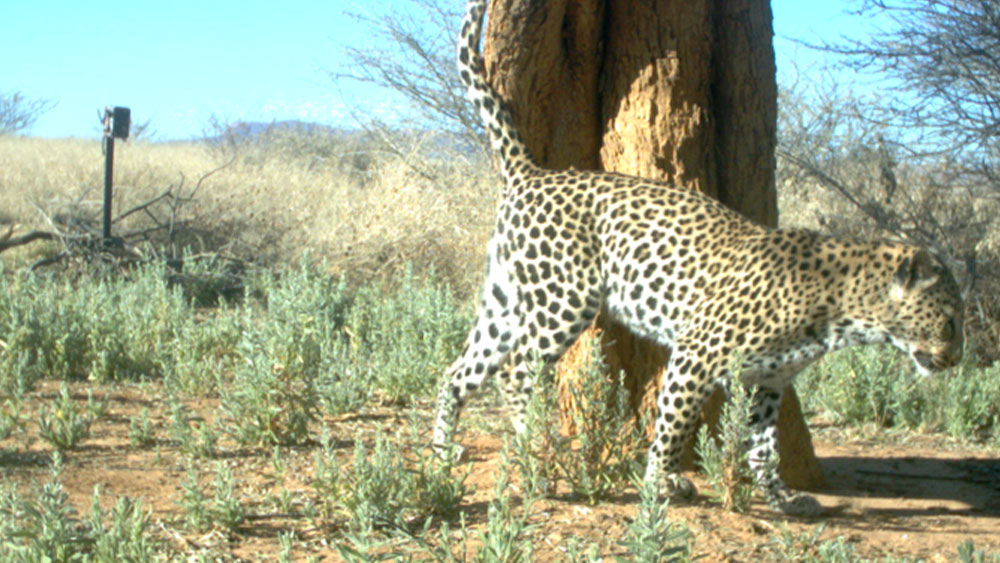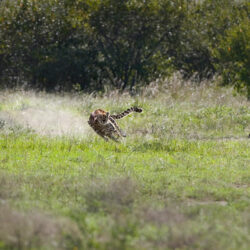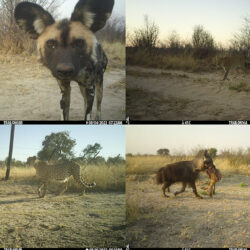Beyond Solitude: The Surprising Complexity of Leopard Social Structures
-

- by Stijn Verschueren May 2, 2023

Article Summary: Social organization of a solitary carnivore, the leopard, inferred from behavioural interactions at marking sites
Authors: Stijn Verschueren, Ezequiel C. Fabiano, Esther N. Nghipunya, Bogdan Cristescu, Laurie Marker
Leopards are known for their solitary nature, but recent research has found that they possess a surprising degree of social complexity that is essential for their population regulation and stability. Using camera traps to monitor marking sites, CCF researchers have discovered that leopard social units consist of up to five individuals, engaging in both same-sex and opposite-sex interactions for territorial and reproductive purposes.
These interactions occur through communication cues, such as scent marking, at shared marking sites. Central individuals within these social units, who interact both within and outside their group, are crucial for maintaining social cohesion and stability. Removing these individuals, whether through legal harvest or preemptively to minimize depredation, could weaken social cohesion and ultimately affect population demography. These findings have significant implications for the management and conservation of leopard populations, as they emphasize the importance of understanding social behavior to guide species management. They also suggest that social factors play a critical role in the spatial organization of solitary species and that other seemingly solitary species may have complex social structures that we have yet to fully understand.

In summary, this research highlights the surprising complexity of social structures in a solitary carnivore, the leopard, and emphasizes the importance of considering social behavior in the management and conservation of animal populations. Moreover, the study has implications for the conservation of other species, such as cheetahs, who exhibit forms of semi-social behavior. It is worth noting that this research was produced using “by-catch” data from camera trapping efforts directed towards cheetah population monitoring, which demonstrates how the conservation of one species can also benefit others.
Related Reading
-
October 15, 2024
The Ecology of the Landscape Down to the Smallest Part




